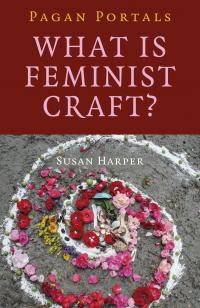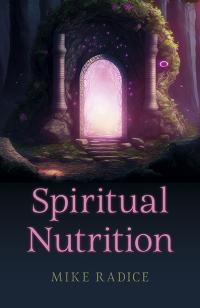
 Melusine Draco’s Woodland Walks
Melusine Draco’s Woodland Walks
Traditional Witchcraft for Woods and Forests
Root & Branch: British Magical Tree Lore
Hunter’s Wood is a dreamscape that a witch can visit at any time, should we feel the need to harness the timeless energy of the Wild Wood, regardless of time or season. For visualisation purposes, the Wood is approximately ten acres in size, flanked by a fast running stream to the east and a long ride, or track, to the west. A ride is a treeless break in forested areas used in ancient times for the hunting of deer - hence the name of this wood. The stream feeds a woodland pool with a slow trickle during the summer months, but when the winter rains come all the accumulated dead leaves and twigs will be swept away by the torrent. The southern edge of the wood opens onto a huge cornfield, in the centre of which is a large mound, crowned by a stand of three Scots pines; while to the north there is a wide expanse of marshy heathland with its alder carr. Narrow paths criss-cross the wood: some are old and man-made, others are animal tracks, but all will lead us deeper into the woodland realm.
This Wood is old. It has grown old alongside humanity and bears the evidence of its passing; generations of witches have wandered in secret glades, gathering herbs and plants at the midnight hour. Near the woodland ride, we discover other signs, particularly in the shapes of the trees that tell of the history of the wood and what it has been used for. The word coppice comes from the French, couper, meaning ‘to cut’ and the most obvious signs of past coppicing is the presence of ‘many-trunked’ trees growing on the site of old coppice stumps. It was also important in past times to keep livestock out since they would destroy the young shoots and so the area was surrounded by a ditch with a large bank inside, which was often fenced. Old woodland may also have the remains of a stone wall used to protect the coppiced area. In Hunter’s Wood, the remnants of the bank and wall can still be seen where the ruins of the charcoal burner’s cottage disappears under a tangle of briar and bramble.
A witch should know that the efficiency of the woodland’s eco-system depends on how much of the sun’s energy can be utilised by the green plants and converted into carbohydrate. The tallest trees of the wood, which form the ‘canopy’, are the first to receive the sun’s rays and what grows beneath this layer depends on how much light can filter through to be tapped by other more
lowly plants. In beech woodlands, there is very little, but oak and ash are relatively light shade-casters and a lush growth of plants can exist beneath them. Immediately beneath the canopy will be tall bushes and small trees, which form the second or ‘shrub-layer’ of the wood.
Growing beneath the shrub layer is a mass of herbaceous plants that form the ‘herb layer’, so vital to a witch’s traditional wort-lore. Many of these plants come into flower early in the year, or have developed large flat leaves to make the most of what light is available. The lowest layer of all is the ‘ground layer’ of mosses and liverworts, which remain green throughout the year and are actively growing even in winter.
Another clue to woods that were once coppiced is the abundance of spring flowers. The regular tree cutting allowed plenty of light to reach the woodland floor and this encouraged the growth of the plants. Woodland flowers are slow to spread and so their presence in large numbers is an excellent indication that the wood is ancient; bluebells spread very slowly on heavy clay soils, so a carpet of them under trees could also be the clue to old woodland. Primroses, violets and wind-flowers are found here - all part of the medieval witch’s medicine chest. Wild flowers also provide the woods with some of their most attractive features. Because many have adapted naturally to flower before the leaves develop in the shrub and canopy layers, they are regarded as the harbingers of spring. No doubt to our hunter-gatherer ancestors this reawakening of the woodland contributed to the mystical significance of the many rites and rituals associated with the season. A further indication of an old wood is a rich variety of flowers, particularly if bluebells, snowdrops, wood anemones, primroses, yellow archangel and early purple orchids are present. Dog’s mercury may seem to be a common woodland plant yet it is rarely found in recently planted woods - that is, woodland that has formed in the last 100 years - and so is also a good indicator of old woodland. The presence of such flowers in a hedge also suggests that it originated as part of a wood, since these species do not readily colonise hedgerows.
The deeper we penetrate into the Wood’s interior we come to the denser shade of a holly thicket and even on the brightest summer’s day, little light filters through the overhead canopy. This part of the Wood is imbued with a strange atmosphere and, as in so many natural places that people have left alone, a witch enjoys the frisson of nervous wonder. The woodland floor is bare except for dried prickly leaves and a scattering of boulders covered entirely in the rich velvet green of a variety of mosses. Here the stems and branches of the holly trees are almost pure silver-white, not the dingy pewter colour of urban trees – and the holly possesses magical protective powers that can be used in amulets and talismans.
Nearby we find an old beech tree that is so hollow it is amazing the blasted trunk can support the massive branches and rich canopy. This once handsome giant of Hunter’s Wood is coming to the end of its life but each year it sprouts the delicate veil of green leaves that tells us spring is well and truly here again. In the folds of its hollow trunk, we can shelter from summer showers; eat beechnuts in the autumn and remain safe and dry as the winter snow drifts down through the branches. Whenever we pass this way, we greet the old tree as though it were a friend and hope it survives the next winter’s gales.
The Sacred Places
It is said that the forest knows all and is able to teach all; that the forest listens and holds the secret of every mystery.
Since ancient times, woods have been places of sacred groves and nemorous temples, including those of the Druids and Iceni. Sir James Frazer refers widely to sacred groves and tree worship in
The Golden Bough, while Old Craft teacher, Mériém Clay-Egerton wrote extensively on the subject of trees and produced some highly evocative pieces relating to her experiences:
To me this was a place that had obviously been held as a sacred area for so very long now that it had in its turn breathed this very atmosphere itself and so projected this onto a mind which was prepared or conditioned to be both sympathetic and empathetic to various woodlands and their forms of existence … it resembled what I might envisage as a naturally constructed ‘cathedral’. Here lived and breathed holiness and beauty …
The Wild Wood, however, is the dark, untamed part of natural woodland where unearthly and potentially dangerous beings are still to be found. This is not everyone’s favourite place and many urban witches never get over an ‘atavistic fear of Nature uncontrolled’. Historically, the term ‘wildwood’ is the name given to the forests as they were some 5,000 years ago, before human interference, and the pollen records for that time confirm that elms made up a substantial component of the wildwood, along with the oak, birch and lime.
On a magical level, the Wild Wood refers to those strange, eerie places that remain the realm of Nature and untamed by man. Ancient gnarled oaks, festooned with ferns and draped with lichen, carry an air of solitude and remoteness that is deeply unnerving - here birdsong and the trickle of running water are the only sounds to break the stillness. It is the Otherworld of the ‘unearthly and potentially dangerous’. It is the realm of Pan and the Wild Hunt. In modern psychology, it refers to the dark inner recesses of the mind, the wild and tangled undergrowth of the unconscious. Here, among the trees, we are never sure that what we see is reality or illusion.
Mériém Clay-Egerton described the strange half-light that anyone who walks in the Wild Wood will immediately recognise.
‘I was always glad to go deeper into the apparent gloom because I would be beyond one of the woodland’s outer barriers ’
Although it is impossible to describe the sensations of the Wild Wood, no one who has walked there can remain unchanged by the experience. Nevertheless, even witches are not always welcome in this tree-filled wilderness. Hostile forces can physically bar our entrance into the inner sanctum of the wood, just as Philip Heselton describes in Secret Places of the Goddess. ‘The undergrowth is a thick tangle of briar and bramble, giving the aura of a place ‘set apart for mysterious concealment’. Entwined with these almost impenetrable barriers, are tufts of tall ferns, the seeds of which can be used to cast a witch’s cloak of invisibility. We must learn to heed the signs, however, for Nature does not always allow humans to pass.
Nevertheless, Traditional Witchcraft for the Woods and Forests takes us on journeys of discovery through Nature’s own woodland ‘calendar’ and, hopefully will reawaken the dormant senses that coursed through the veins of those witches who lived long ago in these ancient places. In a series of guided meditations and pathworkings, we will learn how to reconnect with the spirit of the landscape and learn to walk softly through the woodlands of both the physical and the astral realms. We will come to understand the gift of Nature’s bounty, and make use of the materials that will ultimately lead to an intimacy with wild things that can only come about through close contact and familiarity.
Throughout our long history, forests have been places of shelter, providing food for man and fodder for the animals; the wood for fuel (i.e. warmth and cooking) and for making weapons and other utensils. At the same time they have also been places of fear, where the temperamental Faere Folk, wood sprites and elementals lurked in the dappled shadows. Even today, few places can rival an English oak wood in early summer for peace and beauty with its carpet of primroses and bluebells. Or the cathedral-like majesty of the autumn beech wood with the sun’s light filtering through the leaves. Or the brooding quiet of the ancient holly wood. Perhaps it is not surprising that our remote ancestors performed their acts of worship in forest clearings and woodland glades, for this is where they came face to face with ‘Nature’ – however they chose to see it.
So come and walk with us awhile … take my hand, child, and I will take you safely through the Wild Wood
Traditional Witchcraft for Woods & Forests (A witch’s guide to the woodland with guided meditations and pathworking) is published by Moon Books : ISBN 978 1 84694 803 9 : and Root & Branch: British Magical Tree Lore ISBN 978 1 78697 447 1 published by Ignotus Books are both by Melusine Draco.
Categories:
0 comments on this article






